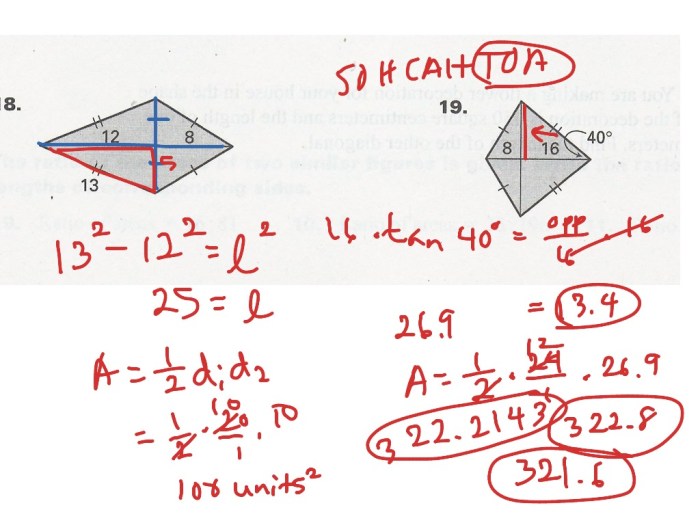Welcome to Trapezoids and Kites Quiz Part 2, where we delve deeper into the fascinating world of these geometric shapes. Building upon the foundations established in Part 1, this quiz challenges your understanding of trapezoids and kites, their unique properties, and their practical applications.
Prepare to engage with thought-provoking questions that test your knowledge of these intriguing shapes. Let’s embark on an exploration of their defining characteristics, geometric relationships, and real-world significance.
Trapezoid Properties

Trapezoids are quadrilaterals with two parallel sides. These parallel sides are called the bases of the trapezoid, and the other two sides are called the legs. Trapezoids can be classified into three types: isosceles, scalene, and right. Isosceles trapezoids have two congruent legs, scalene trapezoids have no congruent sides, and right trapezoids have one right angle.Trapezoids
are commonly found in real-world objects, such as tabletops, roofs, and even the shape of a slice of pizza.
Types of Trapezoids
There are three main types of trapezoids: isosceles, scalene, and right.
- *Isosceles trapezoids have two congruent legs and two congruent base angles.
- *Scalene trapezoids have no congruent sides or angles.
- *Right trapezoids have one right angle and two congruent base angles.
Kite Properties
Kites are quadrilaterals with two pairs of adjacent congruent sides. This means that kites have two congruent triangles that share a common side. Kites can be classified into three types: diamond, box, and delta. Diamond kites have four congruent sides, box kites have two pairs of parallel sides, and delta kites have one pair of parallel sides.Kites
are often used for recreational purposes, but they can also be used for scientific and military applications. For example, kites have been used to lift weather instruments into the atmosphere and to carry cameras for aerial photography.
Types of Kites, Trapezoids and kites quiz part 2
There are three main types of kites: diamond, box, and delta.
- *Diamond kites have four congruent sides and two pairs of congruent angles.
- *Box kites have two pairs of parallel sides and two pairs of congruent angles.
- *Delta kites have one pair of parallel sides and two pairs of congruent angles.
Trapezoids and Kites in Geometry

Trapezoids and kites can be used in a variety of geometric constructions. For example, trapezoids can be used to construct parallelograms and squares, and kites can be used to construct rhombuses and rectangles.The relationships between the angles and sides of trapezoids and kites can be used to solve a variety of geometric problems.
For example, the Pythagorean theorem can be used to find the length of the legs of a right trapezoid, and the area of a trapezoid can be found using the formula A = (b1 + b2)h/2, where b1 and b2 are the lengths of the bases and h is the height of the trapezoid.
Trapezoids and Kites in Real-World Applications: Trapezoids And Kites Quiz Part 2
Trapezoids and kites are used in a variety of real-world applications, including architecture, engineering, and design. For example, trapezoids are used in the construction of roofs and bridges, and kites are used for recreational purposes, such as flying and kiteboarding.In
addition to their practical applications, trapezoids and kites also have cultural significance in many parts of the world. For example, kites are often flown during festivals and celebrations, and they are often used as symbols of good luck and prosperity.
Question & Answer Hub
What is the key difference between a trapezoid and a kite?
A trapezoid has two parallel sides, while a kite has only one pair of parallel sides.
What is the significance of the diagonals in a kite?
The diagonals of a kite are perpendicular and bisect each other, forming four right triangles.
How can trapezoids be used in architectural designs?
Trapezoids are commonly used in roofs, windows, and doorways due to their structural stability and aesthetic appeal.
What cultural significance do kites hold in different parts of the world?
Kites have been used for centuries in various cultures for religious ceremonies, festivals, and recreational activities.